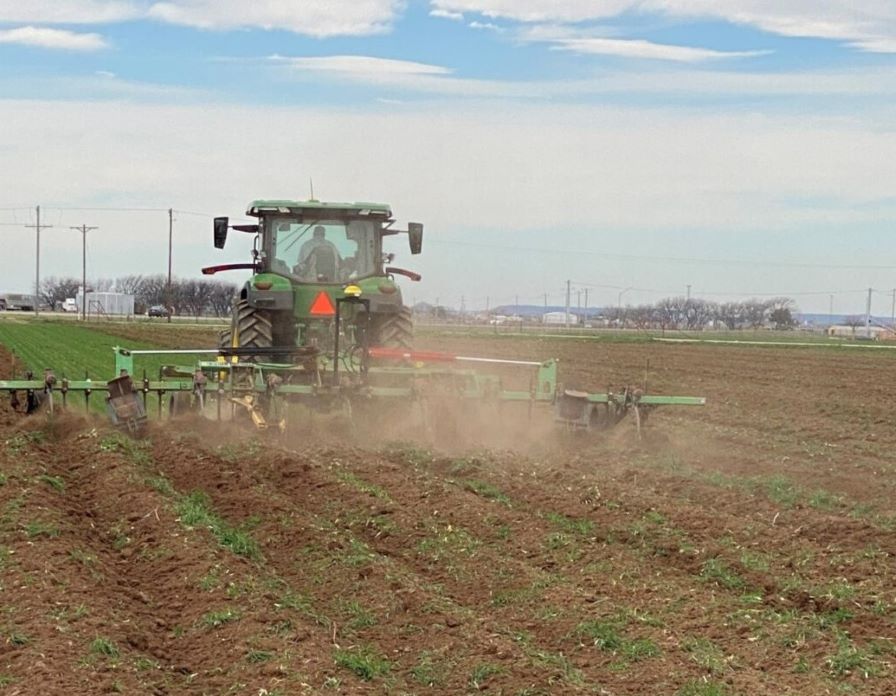Plexus: NY Futures Continue to Tread Water
NY futures continued to tread water this week, as May was down 11 points to close at 89.56 cents, while December gained 41 points to close at 91.29 cents.
Despite a short-lived flash in the pan in reaction to the unexpected export ban in India, the market was unable to generate any sustained momentum in either direction, as near-term supportive forces continued to keep a longer-term bearish outlook in check.
The US export sales report of this morning was constructive, as 117’900 running bales net were added to this season’s tally, while another 20’900 running bales net were booked for next marketing year. This brings current crop commitments to 11.4 million statistical bales, not counting some 1.5 million in optional sales. So far 5.7 million bales have been shipped, which is exactly half of existing commitments. Last week’s shipments of 392’800 running bales were a marketing year high and the current pace of exports remains well ahead of the 240’000 running bales needed to get to the USDA estimate of 11.0 million statistical bales.
What’s encouraging about the last few export sales reports is that net sales kept increasing at a surprisingly strong rate despite the fact that only 3.3 million statistical bales of US cotton remain uncommitted at this point. Availability looks even tighter if we consider that domestic mills will need about 0.9 million bales for August to October deliveries and that there are 1.5 million in optional sales that could potentially come out of this remaining pool of cotton. There is of course always the possibility that cancellations may free up some of the 5.7 million bales that remain unshipped at this point, but with shipments going out as fast as they are week after week, the fear of cancellations seems to be a lot less prevalent than it was a couple of months ago.
Earlier this week India blindsided the cotton world by putting an immediate ban on all cotton exports. It was estimated that as of March 5 India had already exported around 9.4 million local bales, with registrations of another 3 million bales pending. The textile lobby apparently fears that stocks would get too tight if 12 million bales were allowed to leave the country, much to the dismay of farmers, who have seen prices for their seed cotton tumble this week. Given the recent upward revision in beginning stocks and weaker than expected mill use, we feel that India still has plenty of cotton left and that this kneejerk reaction was therefore unwarranted. We probably haven’t heard the last of it and additional exports may still be allowed once the dust settles and cooler heads prevail.
This is not the first time that India has banned exports on short notice. Last time it did so was in 2010 and in doing so it helped fuel a runaway bull market. Fortunately this is not the case this time around, because unlike in 2010, global stocks are plentiful and textile demand is still relatively slow. Nevertheless, the market managed to lock limit up on Monday and synthetic values were as much as 600 points higher than on Friday. However, it was mainly short covering by speculators who fueled the advance, while the trade seemed to welcome the bounce as a selling opportunity, especially in December.
The latest CFTC report as of February 28 showed that large speculators had reversed their long-time net long to a 5’254 lot net short position. This change came about as outright spec shorts increased their holdings by about 20’000 contracts over the last four weeks, while outright spec longs more or less maintained the same position. We assume that some of these newly established spec shorts got stopped out on Monday, which was probably the main driver behind this mini bull run.
Other than the 0.5 million bales net short by large specs and a 0.1 million bales net long by small speculators, the two major positions in the futures market belong to index funds (6.6 million bales net long) and the trade (6.2 million bales net short). As we all know by now, index funds are a very passive group of market participants and their position is probably not going to change much no matter what the market does. This leaves the trade along with large specs as the major influence in the market. The trade is likely going to take a two-pronged approach to the market over the coming months. On the one hand it will buy back short futures in current crop that are hedging physical longs, while on the other hand we will likely see new shorts being put on in December once the Northern Hemisphere crop gets planted. Some feel that the market should reflect carry across the board, but given how little cotton remains for sale in current crop, we don’t believe that full carry will return before next season.
So where do we go from here? Despite some excitement due to the Indian situation, the market has gone nowhere over the last couple of weeks. Old crop should remain fairly well supported due to the artificial tightness that has been created by the Chinese Reserve and now to some extent by India, while new crop is likely going to see increased pressure, as a third consecutive seasonal surplus and record ending stocks are being discounted by the market.









